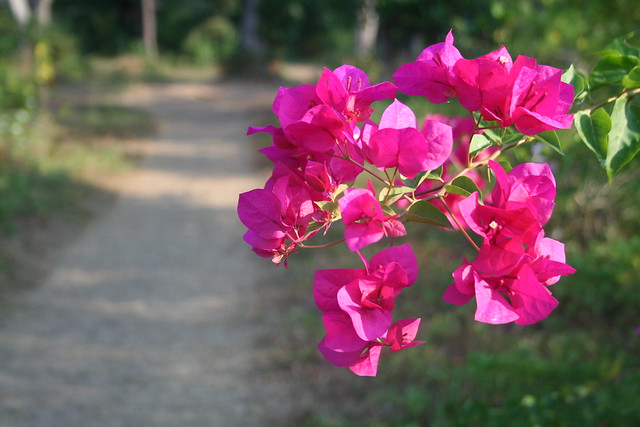One of my favorite Thai dishes is tom kha soup. I adore the combination of spices that bring sweet, sour, and spicy into stark relief. By adding more coconut and sugar, I was able to create a bright sorbet that both surprises and delights.
Ingredients:
kaffir lime leaves, sliced
-
2 inches lemongrass stalk, sliced
-
3 slices galangal
-
2-3 Thai chilis, sliced
-
1 lime, juiced
-
1 mature coconut (or use a can of coconut milk)
-
1/4 C sugar
Instructions:
Step One
If you're making your coconut milk, start by cracking open the coconut by hitting it with a hammer. Note that there is water in the center that will escape when cracked.Step Two
Score the coconut meat and then pry it out in chunks with a butter knife. My oyster shucking knife was perfect for this. You can also grate out the coconut meat with a coconut scraper.Step Three
Rinse the meat and place in the blender. Fill the blender with about a 1/2 C of fresh water and process.Step Four
Strain the milk from the meat, squeezing to remove as much milk as possible. You can toast the meat as there will be a lot left.Step Five
Put the kaffir lime leaves, lemongrass, galangal, and Thai chilis in a pan with 1/2 C water and bring to a boil. Continue to boil for 10 minutes and then turn off the heat. Stir in the sugar, cover, and allow to steep for at least 30 minutes.Step Six
Strain off the spices and stir in 1 1/2 C of the coconut milk, making sure to get as much of the coconut cream as possible. Process in an ice cream maker till frozen and smooth. Serve with fresh tropical fruit, such as mango.Effort: Medium (Hard if you make the coconut milk)
Prep time: 30 minutes
Cook time: 45 minutes
Total time: 1 hour and 15 minutes
Yield: 2 C





























